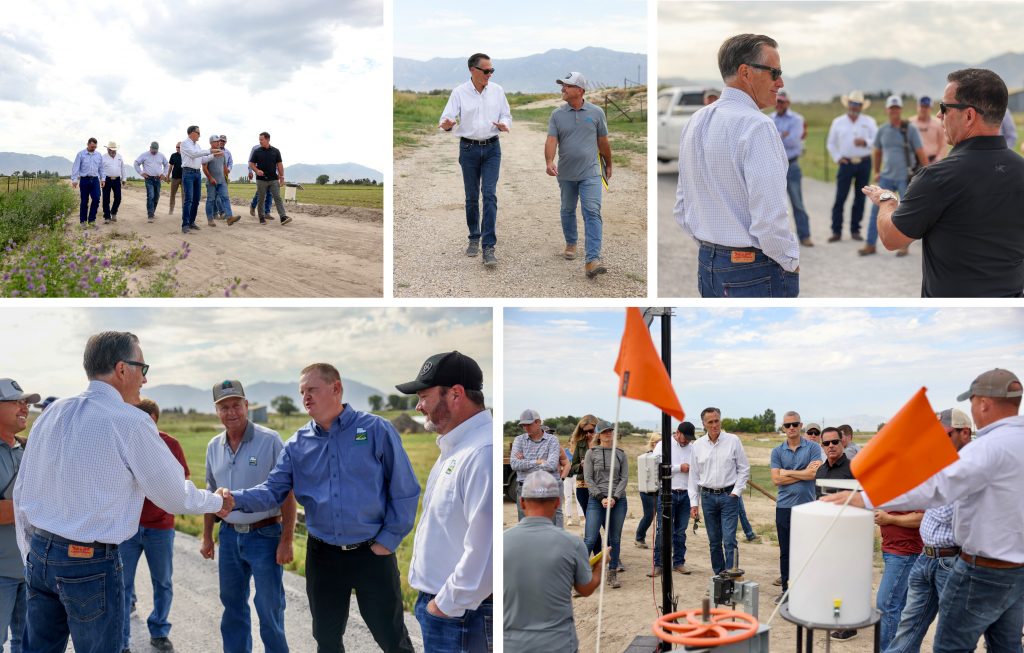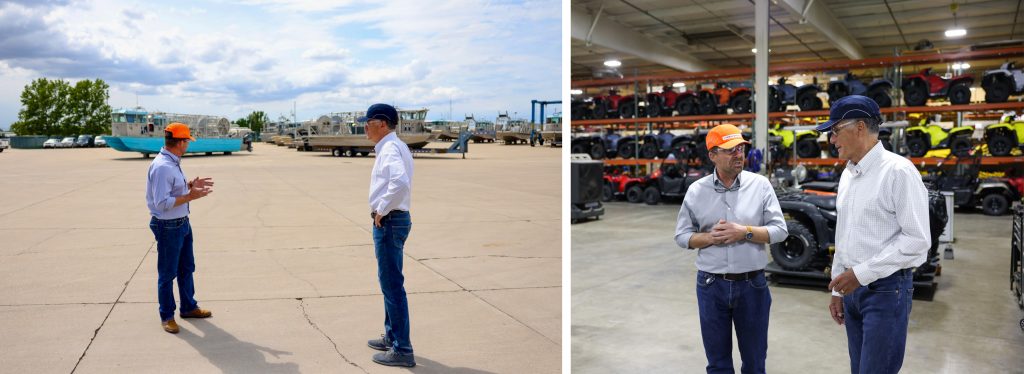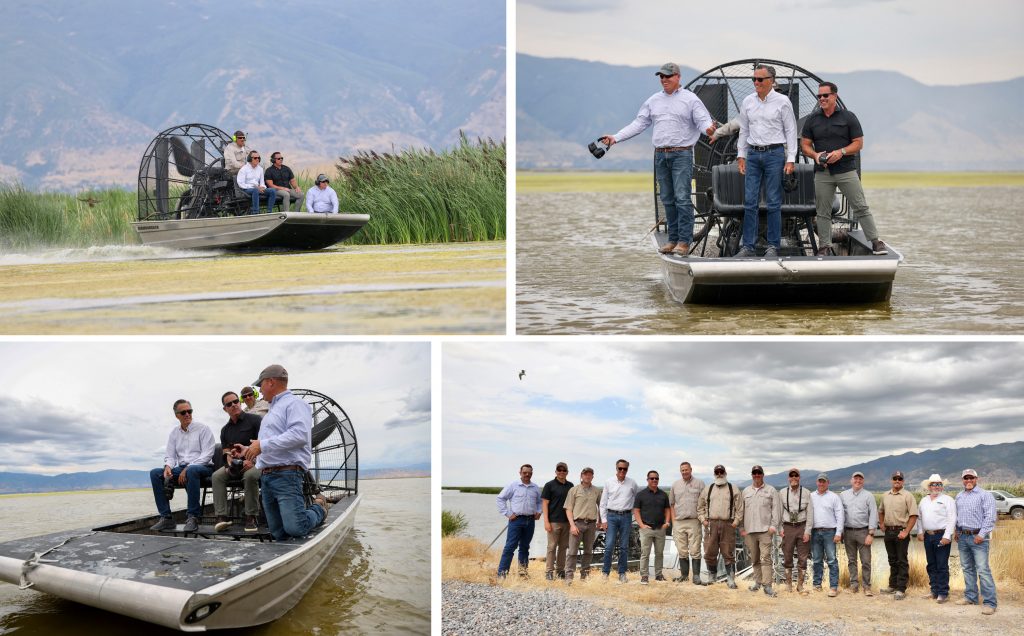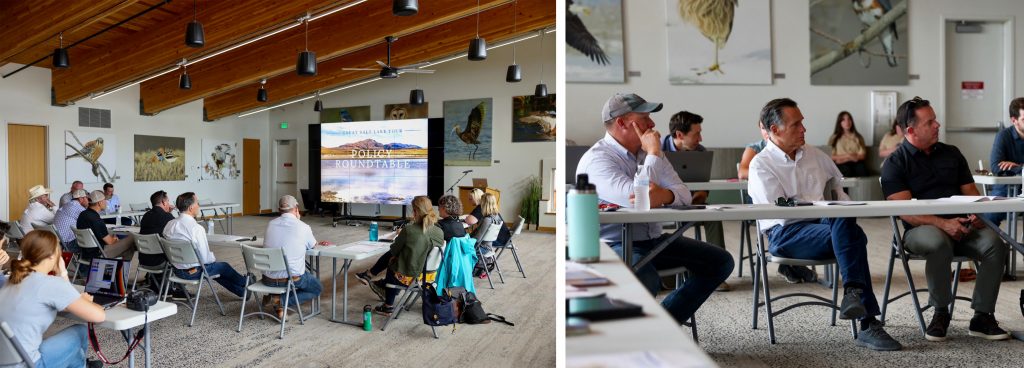SALT LAKE CITY—U.S. Senator Mitt Romney (R-UT) and Speaker of the Utah House of Representatives Brad Wilson today toured areas connected to and dependent on the survival of the Great Salt Lake. Stops along the tour included Bear River inflows, an agricultural site, Great Salt Lake Brine Shrimp Cooperative, and Farmington Bay. As part of the tour, Senator Romney and Speaker Wilson toured the Great Salt Lake on an airboat to have a firsthand look at the implications of a receding lake. Photos of the day can be found below.
“With the Great Salt Lake currently at the lowest levels ever recorded, we must do whatever is necessary to save it. Today’s visit was informative in our ongoing efforts to restore this critical body of water,” Senator Romney said. “I appreciate Speaker Wilson’s leadership in working toward a permanent solution to save our state’s iconic body of water, and I am proud to support Utah’s efforts at the federal level. I hope that the House will soon pass my legislation—The Great Salt Lake Recovery Act—to study historic drought conditions and protect the long-term health of this lake.”
“The Great Salt Lake is more than just a lake—it is an irreplaceable asset that directly impacts our state’s environment, economy, and quality of life,” said Speaker Wilson. “Preserving the lake requires a collaborative effort and I appreciate Sen. Romney’s efforts to bring attention, funding, and policy change at the federal level. Preserving the Great Salt Lake will continue to be my top priority and I am optimistic for the lake’s future.”
Bear River Migratory Bird Refuge
“The Great Salt Lake and its wetlands sustain over 250 species of migratory birds. Our first stop of the tour was the U.S. Fish and Wildlife Bear River Migratory Bird Refuge in Brigham City. It’s critical that we protect the Lake’s ecosystem, and that includes these bird habitats and communities.”
Agricultural Industry Tour
“Utah’s farmers are good stewards or our land and can have a large impact on water conservation efforts. The farmers we met today are committed to saving the Great Salt Lake by working to make our state drought resilient. They’re developing agricultural systems—like automated irrigation gates—that have the potential to save 100,000 acre feet of water, which would open up more water for the Great Salt Lake.”
Brine Shrimp Industry Tour
“The Great Salt Lake provides 45% of the world’s brine shrimp, which supplies food for fish farms and is a valuable food source to our region’s migratory birds. Speaker Wilson and I toured the Great Salt Lake Brine Shrimp Cooperative to learn more about efforts to preserve a natural and sustainable population of brine shrimp amidst the Lake’s dropping water levels and rising salinity.”
Boat Tour of the Great Salt Lake and Wetlands
“Toured the Great Salt Lake by airboat to have a firsthand look at the implications of a receding lake—which hit a new historic low earlier this month. We must do everything in our power to save the Lake—our climate’s air quality, Utah’s economic health, plants and animals, and way of life depends on it.”
Policy Discussion and Roundtable
“We ended our day on the Great Salt Lake with a roundtable discussion at the Eccles Wildlife Education Center in Farmington. It’s clear that we must communicate more broadly to Utahns—and the country—the Great Salt Lake crisis and its implications. Speaker Wilson and I will continue to work with stakeholders on solutions to save this iconic part of Utah.”
Background:
This summer, Senator Romney introduced the Great Salt Lake Recovery Act, legislation to study historic drought conditions and protect the long-term health of the Great Salt Lake. Romney’s legislation, which builds on the efforts taken by the Utah Legislature, passed the United States Senate on July 28, 2022. In 2021, Romney introduced legislation, the Saline Lake Ecosystems in the Great Basin States Program Act, which would establish a scientific foundation and ongoing monitoring system to inform coordinated management and conservation actions for threatened Great Basin saline lake ecosystems and the communities who depend on them.






